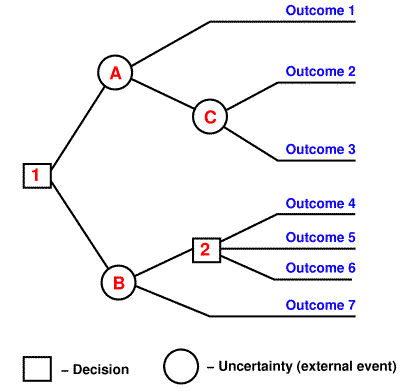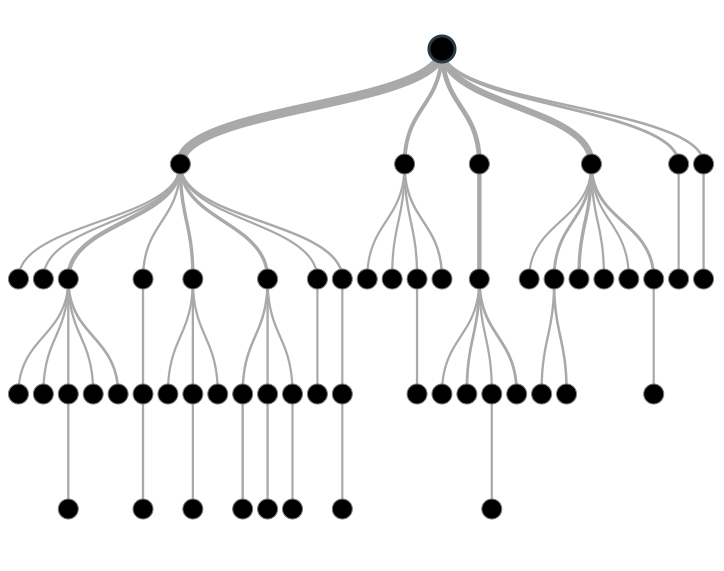This is life, and there are so many consequences for our actions. How many choices can we make and how many different outcomes can come from that one decision, let alone several decisions. It is around the time that one enters the workforce that it is a good idea to begin to learn how to make a decision tree. This is the notion of discovering several outcomes of your choices and it may help you decide which path to take. The decision tree uses a model or graph to display the possible outcomes of any circumstance.
Self-made billionaire Elon Musk proudly uses this model to help to determine his life and the outcomes of his decisions. The thing about charting a career is you can never know the result of a decision before you make it, but Musk uses the decision tree to make big decisions.
 Decision Tree Example
Decision Tree Example

decision tree format
This is very similar to Warren Buffett’s way of making big decisions. He is one of the most respected businessmen in the world and in a talk, he compares these decisions to Russian roulette. If there is even the slightest chance that the outcome could go horribly wrong, it isn’t worth the risk. If someone said to hold a gun to your head with one bullet and offered you any number of money as a reward it still isn’t worth it.
 Utilizing a decision tree isn’t difficult and doesn’t require you to have a PhD. All that’s needed is a basic understanding of probability. Here’s a step-by-step process according to Business Insider, you can follow to use the principles in your decision making:
Utilizing a decision tree isn’t difficult and doesn’t require you to have a PhD. All that’s needed is a basic understanding of probability. Here’s a step-by-step process according to Business Insider, you can follow to use the principles in your decision making:
· Understand the different outcomes that could happen (both positive and negative)
· Calculate the expected positive or negative outcome
· Attach a probability to each outcome
· Understand how great the positive or negative outcome is
· Multiple the probability of the positive outcome (probability of winning * value of win) – (probability of losing * cost of the loss)
· Add up and subtract all the expected returns and losses
Whatever the case may be, whether it is financial forecasting, deciding on that new job or whether to move; these are all steps in the direction of our future and choosing one path over another will affect what route our lives will take. Of course, hindsight is always 20/20 and it’s easier to track the changes after you’ve made them, but try making a decision tree for your next big opportunity; you never know how much it could help.
-NM



4 comments
Never heard of these but I am glad I did. Thank you for this it’s really helpful
I love that Elon Musk is so into planning. I schedule my days in increments of hours and he does that in five minute increments! What an inspiring human.
This is a great read and a logical way to make decisions. I’ll definitely try it out!
[…] 13. Not planning out the best and worst case scenario. […]